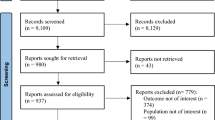Abstract
Background
Adolescent violence is now regarded as a major public health concern. Despite growing interest in psychographic risk factors for violent behavior, few studies have explored the role of strategies to regulate cognitive emotion in adolescents. This study aimed to investigate the prevalence of adolescent violence behaviors and to identify the relationship between specific strategies to regulate cognitive emotion and forms of violent behavior.Adolescent violence is now regarded as a major public health concern. Despite growing interest in psychographic risk factors for violent behavior, few studies have explored the role of strategies to regulate cognitive emotion in adolescents. This study aimed to investigate the prevalence of adolescent violence behaviors and to identify the relationship between specific strategies to regulate cognitive emotion and forms of violent behavior.
Methods
We cross-sectionally surveyed 3315 students in grades 7 to 10 using anonymous, self-reporting questionnaires to examine strategies to regulate cognitive emotion and violence-related behaviors in young adolescents. A logistic regression model was used to identify the relationship between specific violent behaviors and strategies to regulate cognitive emotion.
Results
The most commonly reported type of violent behavior was verbal attack (48.6%), while 7.1% of students were involved in fights and 2.4% had been injured in fights. Boys were involved in all forms of violent behavior studied, and did so significantly more often than girls (P<0.05). Logistic regression revealed that six cognitive emotion strategies (self-blame, rumination, planning, reappraisal, catastrophisizing, and blaming others) were associated with violent behaviors, of which catastrophisizing was the most significant factor of all violent behaviors examined that were influenced by this strategy.
Conclusions
Violence-related behaviors, especially verbal attacks, were common among adolescents. Several cognitive emotion regulation strategies were positively associated with specific violent behaviors, but catastrophisizing was strongly related to all forms of violent behavior. Thus, programs targeting adolescent violence must address this and other maladaptive cognitive emotion regulation strategies.
Similar content being viewed by others
References
World Health Organization. Violence: a public health priority. Geneva: WHO Press, 1996.
Swahn MH, Donovan JE. Correlates and predictors of violent behavior among adolescent drinkers. J Adolesc Health 2004;34:480–492.
Campbell-Sills L, Barlow DH. Incorporating emotion regulation into conceptualizations and treatments of anxiety and mood disorders. In: Gross JJ, eds. Handbook of emotion regulation, Guilford: Guilford Pub, 2007: 542–559.
Garnefski N, Kraaij V. Relationships between cognitive emotion regulation strategies and depressive symptoms: a comparative study of five specific samples. Pers Individ Dif 2006;40:1659–1669.
Mennin DS, Holaway RM, Fresco DM, Moore MT, Heimberg RG. Delineating components of emotion and its dysregulation in anxiety and mood psychopathology. Behav Ther 2007;38:284–302.
Nolen-Hoeksema S, Stice E, Wade E, Bohon C. Reciprocal relations between rumination and bulimic, substance abuse, and depressive symptoms in female adolescents. J Abnorm Psychol 2007;116:198–207.
Fabes RA, Eisenberg N, Jones S, Smith M, Guthrie I, Poulin R, et al. Regulation, emotionality, and preschoolers’ socially competent peer interactions. Child Dev 1999;70:432–442.
Auerbach RP, Abela JR, Zhu X, Yao S. A diathesis-stress model of engagement in risky behaviors in Chinese adolescents. Behav Res Ther 2007;45:2850–2860.
Garnefski N, Kraaij V, Spinhoven P. Negative life events, cognitive emotion regulation and emotional problem. Pers Individ Dif 2001;30:1311–1327.
Zhu XZ, Luo FS, Yao SQ, Randy PA, Abela JRZ. Reliability and validity of the cognitive emotion regulation questionnaire chinese version. Chin J Clin Psychol 2007;15:121–131. [In Chinese]
Li ZY. Practice of the chinese version on the cognitive emotion regulation questionnaire (CERQ). Chin J Health Psychol 2008;16:456–458. [In Chinese]
Brener ND, Simon TR, Krug EG, Lowry R. Recent trends in violence-related behaviors among high school students in the United States. JAMA 1999;282:440–446.
Pickett W, Craig W, Harel Y, Cunningham J, Simpson K, Molcho M, et al. Cross-national study of fighting and weapon carrying as determinants of adolescent injury. Pediatrics 2005;116:e855-e863.
Smith-Khuri E, Iachan R, Scheidt PC, Overpeck MD, Gabhainn SN, Pickett W, et al. A cross-national study of violencerelated behaviors in adolescents. Arch Pediatr Adolesc Med 2004;158:539–544.
Eaton DK, Kann L, Kinchen S, Shanklin S, Ross J, Hawkins J, et al. Youth risk behavior surveillance-United States, 2009. MMWR Surveill Summ 2010;59:1–142.
Liang X, Huang Z, Xiao B, Mai Z, Bu K, Zhang S. Adolescent health risk behavior in Foshan City: I intentional and unintentional injury behavior. Chin J School Doctor 2008;22:123–126. [In Chinese]
Thomas DE, Bierman KL, Thompson C, Powers CJ, Conduct Problems Prevention Research G. Double jeopardy: child and school characteristics that predict aggressive-disruptive behavior in first grade. School Psych Rev 2008;37:516–532.
Lee LK, Chen PC, Lee KK, Kaur J. Violence-related behaviours among malaysian adolescents: a cross sectional survey among secondary school students in Negeri Sembilan. Ann Acad Med Singapore 2007;36:169–174.
Zhu C, Wang J, Zhou Z, Li F. A survey on risk behaviors related to injury of primary and secondary school students in Guangzhou city. Chin J Gen Pract 2009;7:1098–1100. [In Chinese]
Xiao J, Huang R, Yu L, Liu Z, Zhu X, Yao S. Gender differences of the cognitive emotion regulation strategies in senior high school students. Chin Ment Health J 2009;23:670–673. [In Chinese]
Zhan J. Charting the developmental trajectories of visual attention and executive fuction of normal pupils and adolescents. Hangzhou: Zhejiang University Press, 2006.
Luo F, Wang X, Zhang S, Shen D. Characteristics of cognitive emotion regulation strategies in adolescents. Chin J Clin Psychol 2010;18:93–96. [In Chinese]
Garnefski N, Kraaij V, Spinhoven P. Manual for the use of the cognitive emotion regulation questionnaire (CERQ): a questionnaire measuring cognitive coping strategies. Leiderdorp: DATEC, 2002.
Lyubomirsky S, Tkach C. The consequences of dysphoric rumination. In: Papageorgiou C, Wells A, eds. Depressive rumination: nature, theory, and treatment. Chichester: Wiley & Sons Ltd, 2003: 21–42.
Gilliom M, Shaw DS, Beck JE, Schonberg MA, Lukon JL. Anger regulation in disadvantaged preschool boys: strategies, antecedents, and the development of self-control. Dev Psychol 2002;38:222–235.
Author information
Authors and Affiliations
Corresponding author
Rights and permissions
About this article
Cite this article
Bao, P., Jing, J., Yang, WH. et al. Violence-related behaviors among adolescents and its association with cognitive emotion regulation strategies. World J Pediatr 12, 82–87 (2016). https://doi.org/10.1007/s12519-015-0014-6
Received:
Accepted:
Published:
Issue Date:
DOI: https://doi.org/10.1007/s12519-015-0014-6




